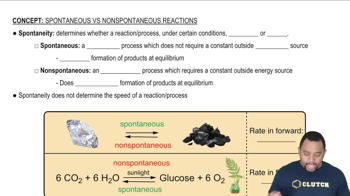Magnesium ions are removed in water treatment by the addition of slaked lime, Ca(OH)2. Write a balanced chemical equation to describe what occurs in this process

Suppose that tests of a municipal water system reveal the presence of bromate ion, BrO3-. What are the likely origins of this ion?
 Verified step by step guidance
Verified step by step guidanceKey Concepts
Bromate Ion Formation

Water Treatment Processes

Environmental Sources of Bromide

In the lime soda process once used in large scale munici-pal water softening, calcium hydroxide prepared from lime and sodium carbonate are added to precipitate Ca2+ as CaCO3(s) and Mg2+ as Mg(OH)2(s): Ca2+(aq) + CO32-(aq) → CaCO3(s) Mg2+(aq) + 2 OH-(aq) → MgOH2(aq) How many moles of Ca(OH)2 and Na2CO3 should be added to soften (remove the Ca2+ and Mg2+) 1200 L of water in which [Ca2+] = 5.0x10-4 M and [Mg2+] = 7.0x10-4 M?
(a) What are trihalomethanes (THMs)? (b) Draw the Lewis structures of two example THMs.
A reaction for converting ketones to lactones, called the Baeyer–Villiger reaction,
is used in the manufacture of plastics and pharmaceu- ticals. 3-Chloroperbenzoic acid is shock-sensitive, how- ever, and prone to explode. Also, 3-chlorobenzoic acid is a waste product. An alternative process being developed uses hydrogen peroxide and a catalyst consisting of tin deposited within a solid support. The catalyst is readily recovered from the reaction mixture. (a) What would you expect to be the other product of oxidation of the ketone to lactone by hydrogen peroxide?
